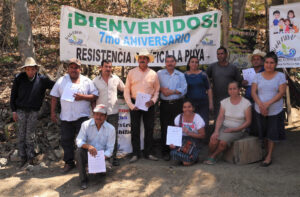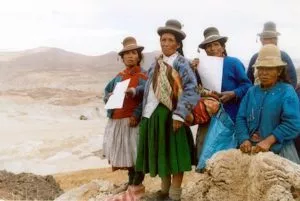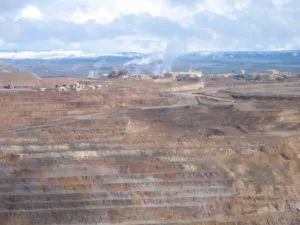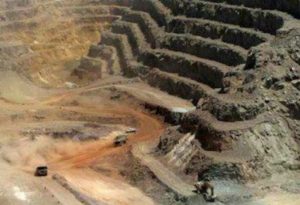In the Air, Under the Ground, Across Communities — The Pervasive Problems of Gold Mining
Gold mining is one of the most destructive industries in the world. It can displace communities, contaminate drinking water, hurt workers, and destroy pristine environments.
Community Impacts:
Economic and Financial Toll
Economists have shown that heavy reliance on mining is not a good long-term national economic strategy.
Mineral-rich developing countries have some of the slowest growth rates and the highest poverty rates in the world- a phenomenon economists call “the resource curse.” Harvard economists Jeffrey Sachs and Andrew Warner studied 95 developing countries that were minerals exporters for the period 1970 to 1990. They found that the higher the dependence on natural resource exports, the slower the per capita growth.
Employment Myth
Mining is no longer a strong generator of jobs. It accounts for perhaps 0.5% of the world’s workforce — about 11 million people.
Costs of Profit
Few countries have effective measures in place to hold mining companies financially accountable for the damage they cause. Even in the United States, the antiquated 1872 Mining Law leaves the burden of abandoned mine clean-up to the taxpayers.
Mining companies in the United States have underestimated the costs of closing their operations at as much as $72 billion. When that happens, taxpayers have to step in to pick up the tab.
Taxpayers Pay the Price
In January 2000, a tailings dam at the Baia Mare mine in Romania split open. The results were massive:
- more than 100,000 tons of wastewater laden with cyanide and heavy metals flooded into the Tisza river, and eventually into the Danube
- more than 1,400 tons of fish were killed
- the drinking water supply of 2.5 million people was contaminating
Faced with skyrocketing cleanup costs and only partially covered by its insurance, Esmeralda Exploration Ltd.- the Australian company that held the principal interest in the mine- went into a form of bankruptcy to protect its shareholders. Unfortunately, the citizens of the countries affected received no such protection.
For More Information
- Earthworks Metals and the Wealth of Nations. A section of Dirty Metals: Mining, Communities and the Environment
- Investopedia defines the resource curse
- Earthworks Abandoned Mines
- BBC Report on the spill at Baia Mare
- BBC Follow up Report on effects of the Baia Mare spill
- Summary of the UNEP/OCHA Report on the Cyanide Spill at Baia Mare, Romania
Human Rights
Right to Land
Rural communities and indigenous peoples often lack legal title to their lands, even though they may have occupied the same lands for many generations. In many countries the law does not recognize indigenous peoples as owners of their lands. Consequently, they are often vulnerable to eviction when a mining lease is granted.
This may be imposed without prior consultation, meaningful compensation, or the offer of equivalent lands elsewhere.
The forced relocation, physical attacks, and loss of livelihoods that comes with land expropriations are all serious human rights violations.
Free Prior Informed Consent
Local communities around the world are demanding that new mining projects only go forward with their approval.This concept is called “free, prior, and informed consent” or FPIC and is recognized for indigenous peoples under an international convention. FPIC protects the international human right that “all peoples have the right to self-determination” and linked to the right to self determination, “all peoples have the right to freely pursue their economic, social and cultural development”.
A close examination of the social impacts of the mining industry reveals a consistent pattern of disregard for community rights to free, prior, and informed consent as well as other basic human rights.
For More Information
- ICMM Mining and Indigenous Peoples’ Roundtable
- Oxfam Guide to Free Prior Informed Consent
- EARTHblog Peru’s Community Consulatation Law
- EARTHblog Business Case for FPIC
- EARTHblog IFC Adopts FPIC Standard
- Oxfam International Ghana: Locals learn to defend their rights against companies
- Oxfam International Land Grabs Q&A
- Global Witness Report on increase in killings as tensions rise over land and forests
The Toll on Indigenous Communities
Many indigenous peoples live in remote areas that have only recently become accessible to the mining industry.
It is estimated that half of all the gold mined from 1995 to 2015 is likely to come from native lands – the traditional territories of indigenous people. These communities’ relative isolation from mainstream society often leaves indigenous communities without basic legal and political safeguards.
Government and business interests often do not respect the spiritual and cultural connection indigenous people have to their lands and environment. They also often fail to respect communities’ right to free, prior and informed consent before developing a mine in the area.
In many countries, the law does not recognize indigenous peoples as owners of their lands. Even when surface land rights are clearly titled to indigenous groups, governments frequently sell off the subsurface rights to mining corporations.Tribes face uphill battles as royalties are denied, land rights are ignored, and wealth continues to leave tribal land.
For More Information
- Indigenous Group in India Holds Strong Against Vedanta Mine
- “The Toll on Indigenous Peoples,” Dirty Metals.
Impact of Mining on Women
In the mining communities of the developing world, the majority of benefits go to men, while the majority of risks fall upon women.
Says World Bank Mining Adviser John Strongman, “Mining has a gender bias. The benefits such as employment and royalties tend to be captured by men, whereas the negative impacts of social disruption and environmental harm tend to fall most heavily on women and their families.”
The series of anecdotes below, culled from various reports and studies on the issue, highlight the gendered nature of mining impacts. What mining companies tout as “benefits” from their projects often do not reach women, and negative impacts are often even worse for women.

Land
In many countries, women are not permitted to own land or hold only restricted land rights . When mines take hold of their land, women often do not receive compensation payments and are excluded from community negotiations with mining companies.
(Un)employment
Mining creates very few employment opportunities for women. It displaces farms and other job sectors in which women are often employed. These changes tend to concentrate economic power in the hands of men and increase women’s dependence on their husbands or male relatives.
Women who do find work in the mining companies often face severe discrimination.
Women are primarily limited to low-level clerical positions and often face sexual harassment from male coworkers or supervisors. In some countries, they can be fired if they become pregnant.
Social Life
The loss of female income exacerbates many other social problems common in mining communities. As many mining communities have to deal with increases in alcoholism, prostitution, drugs, and crime, the impact on family life and women is extremely negative. For example:
- Women are disproportionately affected by the spread of HIV/AIDS and domestic violence.
- Environmental contamination from mining — especially water pollution — greatly complicates the traditional role of women as providers of food and water to their families.
- Women’s roles as caregivers and mothers are complicated by the transience of mine work and severe health impacts of environmental contamination.
For More Information
- International Women and Mining Network
- Oxfam International The Gendered Impacts of Mining
- Oxfam International Report on Women, Mining and Communities
- World Bank Mining’s Gender Bias
- Earthrights International Mining, Gender, and the Environment in Burma
- Women from the Yukon Territory Women, Mining, and the Environment
- ActionAid Women farmers group together to combat impact of local mine
- International Center for Research on Women Property Rights
- “Mining the Womb of the Earth: Struggles of Indigenous Women against destructive mining” [PDF]. Asia Indigenous Peoples Pact.
Worker’s Rights
While mine workers around the world organize to defend their rights and protect their health and safety in the workplace, the painful fact is that miners, like the minerals they produce, are still treated as a disposable resource.
A Dangerous Profession
Mining is one of the most dangerous jobs in the world-the International Labor Organization (ILO) estimates just one percent of the world’s labor force is engaged in mining, while the industry accounts for five percent of on-the-job fatalities — from rock falls, tunnel collapses, fires, heat exhaustion, and other dangers.
Mining can cause a range of long-term disabilities, the most significant of which are:
- respiratory problems such as silicosis
- tuberculosis
- bronchitis
- lung cancer
Extreme heat in deep shaft mining (temperatures can get as high as 60 degrees Celsius (140 degrees F)) and high atmospheric pressure can raise blood pressure and damage the nervous system.
In some countries, the lifespan of miners is substantially lower than that of the general population. In Bolivia, for example, the average miner in the tin mines of Potosí will live only 35 to 40 years. The UN estimates Bolivia’s general population’s life expectancy at birth is about 67 years.
While mine safety is a problem around the world, the lack of strict regulation and enforcement in the developing world is especially acute. To help bridge this regulatory gap, the ILO developed the “Convention on Safety and Health in Mines” in 1995. The initiative requires governments to implement safety measures, guarantee miners’ rights to form unions and to be informed of health and safety risks and precautions. But to date, only 26 countries have ratified the Convention.
In addition to these initiatives, miners ha ve also taken matters into their own hands. Many miners unions are globalizing to increase their leverage with the multinational corporations that employ them. In April 2012, union members around the world who work at Rio Tinto passed a resolution to hold that company accountable and pass measures to protect worker rights and safety.
For More Information
- The Devils Miner (VIDEO): This documentary is about child miners in Bolivia.
- The International Labour Organization’s work on Mining
- The United Mine Workers of America
Social Impacts
Many mining boom towns swell with job seekers and their families, and nearby farmers displaced by the mine. They converge on towns and cities, increasing demand for social services and in many cases changing the character of a place. Increased alcoholism, prostitution, drug use, and other crime can increase with the influx of job seekers.
Mining can provoke fundamental changes to local governance: While mining companies may fund social programs and provide infrastructure such as roads and schools, this may have the unintended consequence of displacing local government and decision-making structures. And when the minerals are gone and the mining stops, mining communities can become financially and politically unstable as they are forced to absorb the costs of cleaning up environmental damage.
Loss of Traditional Ways of Living
Large, open-pit mines can displace farmers and other groups, including indigenous peoples, from their ancestral lands, frequently without enough compensation to buy land elsewhere. Those that hang on frequently experience a loss of revenue due to the environmental damage to the resources on which they rely for agriculture, such as water.
Social Conflict
The Defensoria del Pueblo of Peru recently reported over 200 social conflicts in Peru, most of which are linked to extractive industry projects. But communities’ concerns about water pollution, human rights, and the ecological destruction often associated with mining projects often falls on deaf ears.
The trade in minerals such as tin and tungsten has also fueled brutal conflict in the Congo, eventually leading to legislation to prohibit “conflict minerals.”
The conflicts highlight the need for FPIC, and the government recognized that. Peru passed a new community consultation law that demonstrates the country’s intention to quell many of these conflicts. It gives communities the right to determine what, if any, extractive operations are permitted in their areas.
Golden Rule
- Ensure that operations are not located in areas of armed or militarized conflict.
- Ensure that projects do not force communities off their lands.
- Cover all costs of closing down and cleaning up mine sites.
- Fully disclose information about social and environmental effects of projects.





